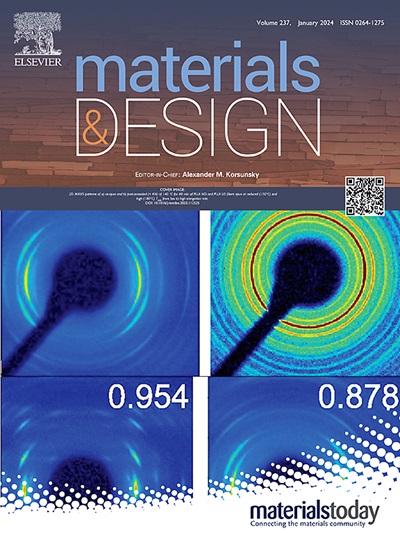Deformation induced microstructure of stress relieved Zircaloy-4 cladding
IF 7.6
2区 材料科学
Q1 MATERIALS SCIENCE, MULTIDISCIPLINARY
引用次数: 0
Abstract
This work evaluates the microstructural evolution of cold-worked, stress-relieved Zircaloy-4 cladding from pristine to uniaxial and biaxial deformed states. Differential aperture Laue diffraction and electron backscatter diffraction techniques are used to characterize intragranular strains, strain gradients, and grain fragmentation as metrics of deformation microstructure. The effects of mechanical anisotropy on deformation microstructure are investigated by comparing characterization results of samples subjected to different applied loads, including biaxial internal pressure and uniaxial tension along the rolled direction at 400 °C. Quantitative comparisons are made between the pristine microstructure and deformation-induced microstructure under both loading modes. Viscoplastic self-consistent simulations are performed to further investigate the microstructural evolution. Results indicate that biaxial loading from internal pressurization increases the deformation microstructure more than uniaxial loading along the rolled direction due to the relationship between loading and texture symmetry. Additionally, characterization results and simulations show distinct deformation-induced micro-textures: axial loading promotes a prismatic fiber texture in the rolled direction, which strengthens the micro-texture inherited from pilgering, whereas pressure loading results in a texture fiber, weakening the original micro-texture inherited from pilgering.

求助全文
约1分钟内获得全文
求助全文
来源期刊

Materials & Design
Engineering-Mechanical Engineering
CiteScore
14.30
自引率
7.10%
发文量
1028
审稿时长
85 days
期刊介绍:
Materials and Design is a multi-disciplinary journal that publishes original research reports, review articles, and express communications. The journal focuses on studying the structure and properties of inorganic and organic materials, advancements in synthesis, processing, characterization, and testing, the design of materials and engineering systems, and their applications in technology. It aims to bring together various aspects of materials science, engineering, physics, and chemistry.
The journal explores themes ranging from materials to design and aims to reveal the connections between natural and artificial materials, as well as experiment and modeling. Manuscripts submitted to Materials and Design should contain elements of discovery and surprise, as they often contribute new insights into the architecture and function of matter.
 求助内容:
求助内容: 应助结果提醒方式:
应助结果提醒方式:


